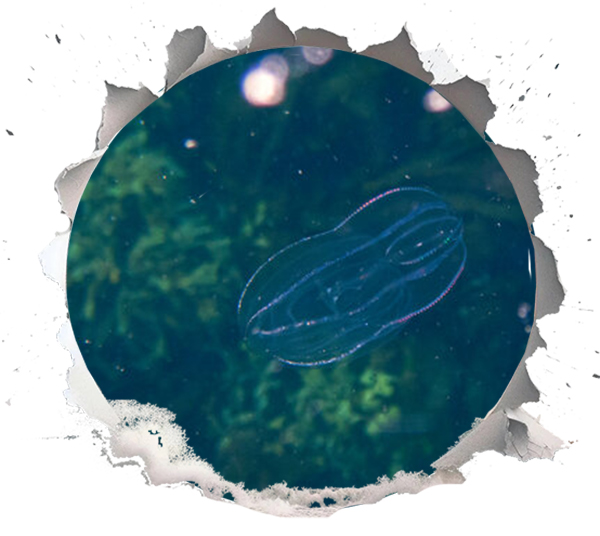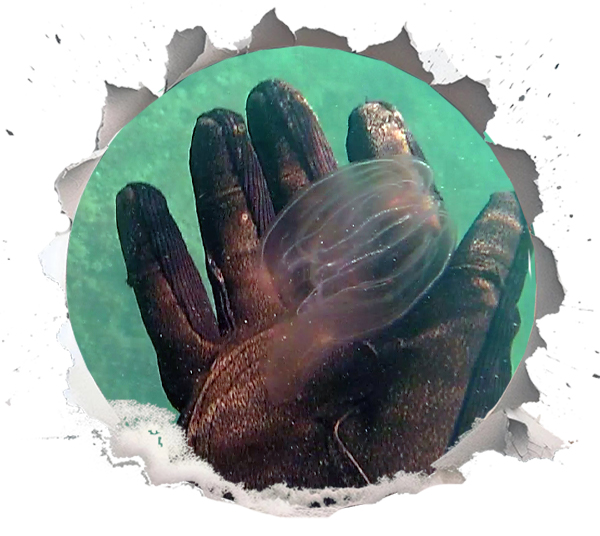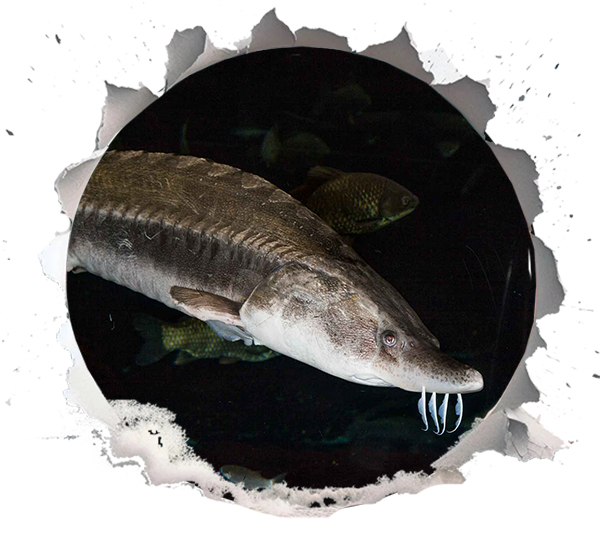What Is Sea Walnut & How Does It Affect Endangered Sturgeons?

The Caspian Sea has long been a jewel for caviar farmers, its waters cradling the world’s most treasured sturgeon species. Yet, beneath its shimmering surface lurks a growing peril: the sea walnut (Mnemiopsis leidyi), an invasive comb jelly that’s stealthily unsettling this fragile ecosystem. For those whose livelihoods hinge on sturgeons, understanding the sea walnut’s role in their decline is not merely a scholarly pursuit; it’s a matter of survival. This article explores the sea walnut’s nature, its infiltration of the Caspian Sea, and the profound toll it’s taking on sturgeons and caviar production.
Unveiling the Sea Walnut: A Deceptive Intruder
At first glance, the sea walnut appears almost otherworldly. Known scientifically as Mnemiopsis leidyi, this translucent, walnut-shaped creature originates from the western Atlantic Ocean. Unlike jellyfish, it’s a comb jelly, distinguished by eight rows of comb-like plates that ripple through the water, casting a mesmerising, iridescent glow. Reaching up to 10 cm in length, it glides with an ethereal grace that belies its true impact.

Beneath this delicate exterior lies a relentless predator. The sea walnut devours zooplankton, fish eggs, and larvae, consuming up to ten times its body weight daily when prey is abundant. With sticky tentacles and an extraordinary capacity to produce up to 10,000 eggs per month, it adapts effortlessly to new environments, cementing its status as a formidable invader.
Why It Matters to Caviar Farmers
For sturgeons, the sea walnut’s appetite is a direct threat. By stripping away zooplankton, the lifeblood of the Caspian’s food web, it starves sturgeon fry of essential nourishment. Worse still, its predation on fish eggs and larvae slashes the populations of small fish that adult sturgeons depend on. This ripple effect places caviar farmers in a precarious position, as the fish they rely on face mounting pressure from an enemy they cannot see.
The Sea Walnut’s Invasion: A Journey of Disruption
The sea walnut’s tale of invasion began in the 1980s, when it stowed away in ballast water from transatlantic ships bound for the Black Sea. Unchecked by natural predators, its numbers exploded, throwing local ecosystems into disarray. By 1999, it had slipped into the Caspian Sea via the Volga-Don Canal; a man-made lifeline connecting the Black Sea basin to this landlocked treasure.
In the Caspian, it found a haven. With no natural foes and an endless supply of zooplankton, the sea walnut flourished. A 2024 study from the Journal of Great Lakes Research highlights how its population swelled to overwhelming levels, triggering a cascade of disruption that native species, including sturgeons, have struggled to withstand.
Ripples Through the Ecosystem: The Sea Walnut’s Toll

The introduction of the sea walnut into the Caspian Sea marked far more than the arrival of a new species—it fundamentally altered the region’s delicate ecological balance. This invasive comb jelly, with its voracious appetite for zooplankton, has unleashed a cascade of disruption that threatens the entire food web. From the smallest microscopic organisms to the Caspian’s most emblematic residents, the sturgeons, the consequences of this unassuming predator’s presence are both profound and alarming.
Zooplankton: The First Casualty
Zooplankton may lack the grandeur of larger aquatic species, yet their role as the bedrock of the Caspian’s ecosystem is indispensable. These tiny organisms provide essential nourishment for a host of species, including the fragile larvae of sturgeons. The sea walnut’s relentless predation has inflicted severe damage, slashing zooplankton populations to critical levels. According to research published in the Journal of Great Lakes Research (2024), over 50 distinct taxa have dwindled to just one-third of their numbers prior to the invasion. This dramatic loss sends shockwaves up the food chain, depriving dependent species of a vital resource and destabilising the ecosystem’s foundation.
Small Fish in Big Trouble
The plight of small fish species like kilka (Clupeonella spp.) exemplifies the sea walnut’s far-reaching influence. These unassuming fish are a cornerstone of the Caspian food web, relying on zooplankton for sustenance while serving as prey for larger predators, including sturgeons. The sea walnut delivers a devastating double assault: it consumes kilka eggs and larvae directly while simultaneously competing with the fish for their primary food source. A study from Inland Water Biology (2018) documented a staggering 60% decline in kilka populations across the southern Caspian, a collapse that has left local fisheries struggling and apex predators facing significant food shortages. The loss of kilka underscores the sea walnut’s capacity to unravel critical ecological links.
Algal Blooms and Beyond
The decline of zooplankton has triggered yet another environmental consequence: the unchecked proliferation of phytoplankton. Normally kept in balance by zooplankton grazing, these microscopic plants have surged in number, leading to frequent and severe algal blooms. These blooms deplete oxygen levels in the water, creating conditions increasingly inhospitable to native aquatic life. For sturgeons, already contending with threats such as overfishing, pollution, and habitat degradation, this altered environment represents an additional burden. The sea walnut’s indirect role in fostering these blooms amplifies the challenges facing the Caspian’s biodiversity.
The Sea Walnut vs. Sturgeons: A Direct Hit
Sturgeons, the ancient titans of the Caspian Sea and the source of its world-renowned caviar(Caspian Sea Caviar), have long endured human-induced pressures. Species such as the Beluga and Persian sturgeon teeter on the edge of survival, battered by decades of overfishing, pollution, and shrinking habitats. The arrival of the sea walnut has introduced a fresh and formidable adversary, striking directly at the heart of their existence by disrupting their food supply.
Starving the Young
For sturgeon larvae, zooplankton are not merely a food source—they are a lifeline during their vulnerable early development. The sea walnut’s insatiable hunger places it in direct competition with these juveniles, stripping away the resources they need to grow and thrive. This deprivation weakens their start in life, reducing the number that survive to maturity. With fewer sturgeons reaching adulthood, the prospects for replenishing their dwindling populations grow increasingly bleak, compounding the species’ already precarious outlook.
Depleting Adult Diets
Adult sturgeons, meanwhile, depend heavily on small fish like kilka to fuel their immense size and energy demands, particularly during the taxing spawning season. As kilka numbers plummet under the sea walnut’s predation, these mature fish face persistent food scarcity. This shortage undermines their physical condition and reproductive success, further jeopardising their numbers. Research from Marine Pollution Bulletin (2024) connects this decline, alongside overfishing, to a sharp reduction in sturgeon populations between 1990 and 2010. The sea walnut’s impact on this vital prey species has become a significant driver of the sturgeons’ ongoing struggle.
The Caviar Connection

For caviar farmers, the sea walnut’s influence translates into an immediate and tangible threat. A decline in sturgeon numbers directly equates to a reduction in caviar production, endangering an industry that once held a commanding presence in global markets. The ripple effects of this invasive species extend beyond ecological concerns, striking at the economic viability of those who depend on sturgeons for their livelihoods. The situation demands urgent attention—conservation measures to curb the sea walnut’s spread and bolster sturgeon populations are not just desirable but essential to safeguarding this storied trade. We also suggest you take a look at our guide to sturgeon farming techniques.
Impact at a Glance
| Impact Area | Details |
|---|---|
| Zooplankton Loss | Over 50 taxa reduced to one-third of pre-invasion levels (JGLR, 2024). |
| Kilka Decline | 60% reduction in southern Caspian populations (IWB, 2018). |
| Sturgeon Survival | Reduced food for larvae and adults threatens spawning success (IWB, 2018). |
Fighting Back: Managing the Sea Walnut
Controlling the sea walnut is a daunting task. Its rapid reproduction and resilience render conventional methods—like chemical treatments—unfeasible in the sprawling Caspian Sea. Yet, scientists and conservationists are working tirelessly to find solutions.
A Natural Predator: Beroe ovata
One promising avenue is Beroe ovata, a comb jelly that preys on the sea walnut. Its introduction in the Black Sea successfully reined in the invader’s numbers, offering a potential model for the Caspian. However, the Caspian’s unique, enclosed nature demands caution—introducing a new species could bring unforeseen consequences, and experts are weighing the risks carefully.
Safeguarding Sturgeons
Alongside efforts to curb the sea walnut, initiatives to bolster sturgeon populations are underway:
- Fishing Bans: Stringent rules restrict harvests, giving beleaguered stocks a chance to rebound.
- Hatcheries: Captive breeding programmes rear sturgeons for release into the wild, bolstering their numbers. But wild caviar still remains super rare.
- Habitat Work: Restoring spawning grounds helps mitigate environmental harm, offering sturgeons a fighting chance.
The Caspian Environment Programme spearheads these efforts, but the sea walnut’s persistence remains a formidable obstacle.
FAQ
The sea walnut, or Mnemiopsis leidyi, is a comb jelly native to the western Atlantic. Its translucent, gelatinous body and comb-like plates set it apart from jellyfish, though it uses sticky tentacles to capture prey.
It competes with sturgeon larvae for zooplankton and preys on fish eggs and larvae, reducing stocks of small fish like kilka—vital food for adult sturgeons. This dual assault weakens sturgeon populations significantly.
While complete removal is improbable due to its adaptability, biological control with Beroe ovata offers hope. For now, the focus remains on managing its impact.
Not necessarily. With swift action—combining sea walnut management, habitat protection, and sustainable practices—there’s still a chance to safeguard this industry. But time is running short.
Farmers can back sustainable fishing, engage with conservation projects, and keep abreast of research to support sturgeon recovery and sea walnut control efforts.

